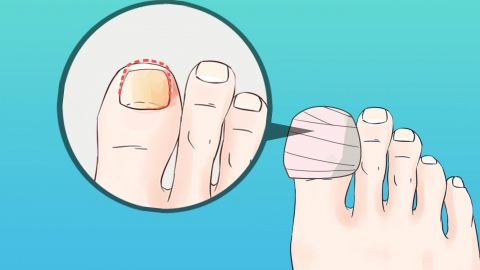What should I do if my paronychia is swollen and painful to touch?
Generally, the treatment methods for painful swelling caused by paronychia include general management, topical medication, oral drug therapy, physical therapy, and surgical treatment. Specific analyses are as follows:
1. General Management
Maintain cleanliness and dryness of the affected area, avoid contact with dirty water or contaminants to prevent secondary infection. Do not trim ingrown nails yourself, and avoid excessive pressure or friction on the affected site. Keep the infected finger or toe as relaxed as possible in daily life and minimize movement. Adjust your diet by consuming more fruits and vegetables rich in vitamins to provide nutritional support for local tissue repair.

2. Topical Medication
Topical application of medications can help relieve inflammation and reduce pain. Commonly used drugs include mupirocin ointment, fusidic acid cream, and iodophor disinfectant solution. Mupirocin and fusidic acid creams inhibit bacterial growth at the site and reduce inflammatory responses; iodophor disinfectant effectively sterilizes the affected area, kills surface bacteria, prevents worsening infection, and creates favorable conditions for inflammation resolution.
3. Oral Drug Therapy
When local inflammation is significant or accompanied by mild systemic symptoms, oral antibiotics may be necessary to control infection. Patients should follow medical advice and take medications such as amoxicillin capsules, cefuroxime axetil tablets, or clindamycin hydrochloride capsules. These drugs act on the infection site via the bloodstream, inhibiting bacterial proliferation, reducing inflammation spread, and alleviating symptoms of swelling and pain.
4. Physical Therapy
Physical therapy can assist in reducing inflammation and promoting recovery. Common methods include infrared irradiation and ultrashort wave therapy. Infrared irradiation improves local blood circulation, accelerates absorption of inflammatory factors, and reduces swelling and pain. Ultrashort wave therapy uses a high-frequency electric field to enhance local tissue metabolism, promote repair of damaged tissues, and facilitate faster recovery.
5. Surgical Treatment
If paronychia has developed into an abscess, or if the nail is severely embedded in the nail groove causing recurrent infections, surgical intervention is required. Common procedures include incision and drainage of the nail fold and nail avulsion. Incision and drainage allow pus to be released from the abscess, reducing local pressure and relieving pain. Nail avulsion involves removing part or all of the affected nail to completely eliminate the source of infection, promote healing of the nail fold tissue, and prevent recurrence.
In addition, during treatment, patients must follow medical guidance strictly and regularly monitor the healing progress of the affected area. If swelling worsens, pain intensifies, or symptoms such as fever occur after treatment, prompt medical attention is needed to adjust the treatment plan and avoid disease progression.






